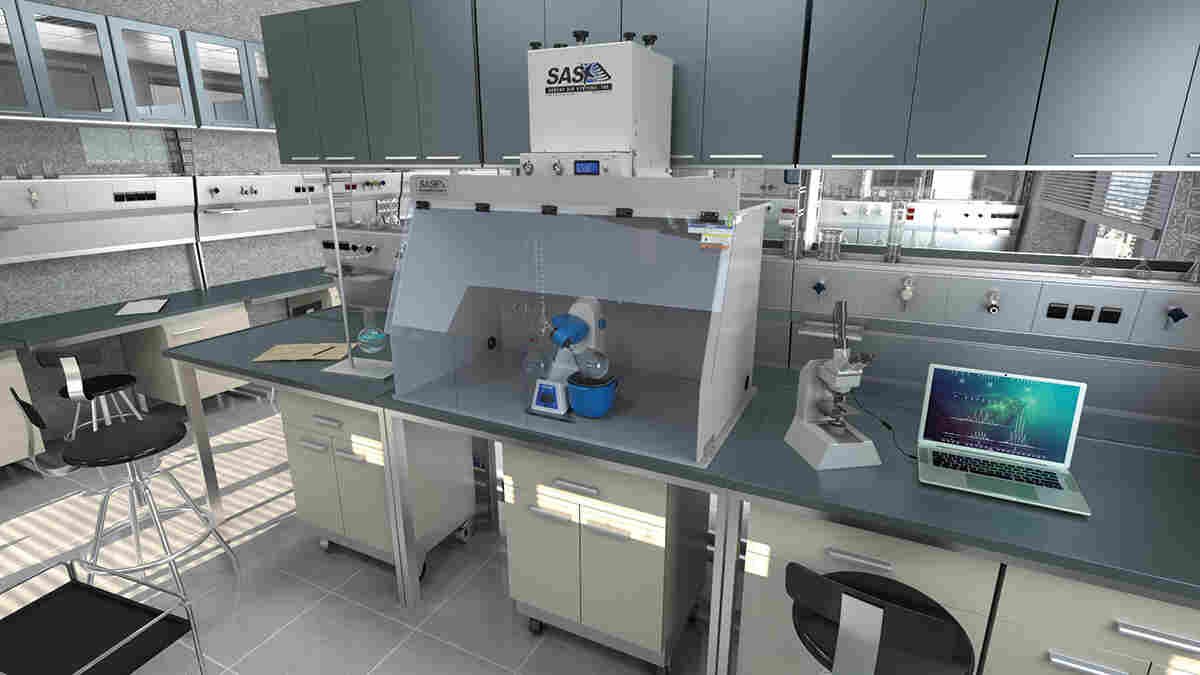In laboratory and hospital environments, safety and efficiency are paramount. One essential tool that ensures these qualities is the fume hood. A fume hood is a ventilated enclosure designed to protect users from hazardous fumes, vapors, and particulate matter. Its role in laboratories spans from chemical handling to biological research, making it a critical asset. This article explores the advantages of using fume hoods in laboratories, emphasizing their importance for safety, compliance, and operational efficiency.
1. Enhanced Safety Measures
The primary function of a fume hood in laboratories is to protect personnel from exposure to harmful chemicals and airborne contaminants. Here’s how it enhances safety:
Containment of Hazardous Substances: Fume hoods are designed to contain and vent toxic gases, fumes, and vapors away from the user and the laboratory environment.
Air Filtration Systems: Modern fume hoods feature high-efficiency particulate air (HEPA) filters and carbon filters, which effectively remove hazardous particles and chemical fumes.
Reduced Risk of Fire and Explosion: Many fume hoods are constructed with fire-resistant materials, minimizing risks associated with flammable substances.
2. Compliance with Safety Regulations
Laboratories, especially in hospitals and research facilities, are subject to strict safety and environmental regulations. Fume hoods support compliance by:
Meeting OSHA Standards: Fume hoods meet Occupational Safety and Health Administration (OSHA) standards for worker protection.
EPA Guidelines for Hazardous Waste Management: Proper ventilation and filtration systems ensure adherence to Environmental Protection Agency (EPA) guidelines.
International Safety Standards: High-quality fume hoods comply with global safety standards such as EN 14175 and ASHRAE 110, which are vital for maintaining certification and accreditation.
3. Improved Air Quality
Maintaining air quality is crucial in laboratory settings, particularly in hospitals where contamination risks can compromise patient health. Fume hoods contribute to better air quality by:
Effective Ventilation Systems: These systems remove contaminants directly from the workspace, preventing their circulation in the laboratory.
Continuous Airflow Monitoring: Advanced models include airflow sensors to ensure optimal performance, providing alerts in case of malfunctions.
Reduced Cross-Contamination: By isolating hazardous processes, fume hoods minimize the spread of contaminants to other areas.
4. Versatility and Application Flexibility
Fume hoods are adaptable to a wide range of applications, making them indispensable in diverse laboratory settings:
Chemical Laboratories: Ideal for handling volatile chemicals and conducting experiments involving toxic substances.
Biological Research Facilities: Equipped with laminar flow options to protect sensitive biological samples from contamination.
Pharmaceutical Testing Labs: Used to maintain sterile environments during drug formulation and testing.
Hospital Pathology Labs: Crucial for safely analyzing biological specimens and handling formaldehyde fumes.
5. Increased Efficiency and Productivity
In addition to safety, fume hoods promote efficiency in laboratory operations:
Streamlined Workflow: Their design allows researchers to perform complex procedures without frequent interruptions caused by safety concerns.
Energy-Saving Models: Modern ductless fume hoods consume less energy while offering high filtration efficiency.
Ergonomic Designs: Many fume hoods are designed for user comfort, reducing strain during long hours of work.
6. Cost-Effective Investment
While the initial cost of installing a fume hood may seem high, its long-term benefits make it a cost-effective investment:
Reduced Liability: Ensures compliance with safety regulations, minimizing legal risks and penalties.
Lower Maintenance Costs: High-quality models require minimal maintenance due to durable materials and advanced technology.
Extended Equipment Lifespan: Protects laboratory equipment from corrosion caused by chemical exposure.
Conclusion
Fume hoods are indispensable tools in laboratories and hospitals, offering unparalleled safety, compliance, and operational efficiency. Their ability to contain hazardous substances, improve air quality, and adapt to various applications makes them a worthwhile investment. As safety standards continue to evolve, modern fume hoods are equipped with advanced features that not only meet regulatory requirements but also enhance productivity.
roland.co.id: For laboratories and hospitals looking to optimize their environments, incorporating fume hoods in laboratories is a step towards a safer and more efficient workspace. Investing in high-quality fume hoods ensures long-term benefits, protecting both personnel and the environment from potential hazards.



